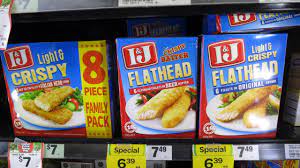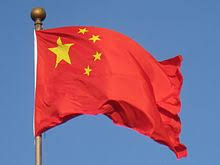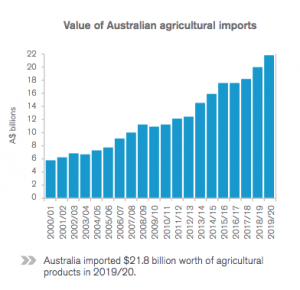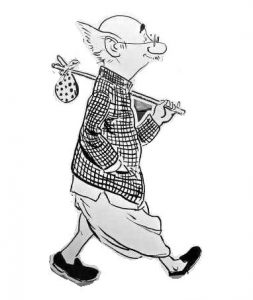Australians are seriously dependent on other countries for the food they eat every day. Most of that food arrives by sea. Any interruption to supplies would materially affect the diet of the nation to the point of hunger. It...
 Australians are seriously dependent on other countries for the food they eat every day. Most of that food arrives by sea. Any interruption to supplies would materially affect the diet of the nation to the point of hunger.
Australians are seriously dependent on other countries for the food they eat every day. Most of that food arrives by sea. Any interruption to supplies would materially affect the diet of the nation to the point of hunger.
It is an absolute fallacy and a hugely deceptive piece of propaganda propagated by farmer organisations and politicians to claim that Australia is self sufficient in food. Nothing could be further from the truth. In 2020 food to the value of $22 billion was imported into Australia, an increase of nearly 10% on the previous year. The retail value of that food is about $44 billion.
The food processing industry in Australia is a mere shell of what it used to be. Over the last twenty years food processors in their droves have closed their doors or left the country because they could not compete on price with food imported into this country, but grown and processed in America, New Zealand and the EU including the UK, countries who all have a standard of living equal to or better than Australia.
These three advanced economies sell to Australia, at a profit, food worth over $10 billion a year (over 50% of all food imports) and increasing annually. This food is now part of the staple diet of Australians. It is worth repeating, if for any reason the supply of this food is interrupted, the diet of all Australians would be severely stressed.
The food, which these countries grow, process, package and transport 12,000 km to get to market in Australia — food like potatoes, bacon and a range of wheat and confectionary products, fish, canned meat and oranges and so much more, have production costs similar to those in Australia, yet they have achieved what farmers and processors in this country could not achieve, even without the huge transport cost of moving product to Australia from the other side of the world — why is that?
Political Ideology -v- The Price of Food Independence.
In the pursuit of political and climate change ideology, being seen to be an open market, sucking up to China and the rest of the world with tariff free terms, chasing Free Trade Agreements, promulgating and even worse believing in the market economy, believing there is a level playing field and God only knows what other virtuous (in their eyes) political, ideological goals, successive governments of Australia, from the left and the right, both state and federal, over several decades have all exhibited a breathtaking incompetence as they have comprehensively destroyed the food processing industry in Australia and in so doing, given away Australia’s food independence.
What is truly frightening about that, is that it appears that nobody knew what they were doing while they were doing it; and probably even now as they wander round the super-market buying imported food and watching prices increase by the hour, they don’t realise the damage they have done to our national food industry.
Thinking back to the times of Fraser, Hawke, Keating, Howard, Rudd, Gillard, Rudd II, Abbott, Turnbull, Morrison, they are all culpable, they must all have had their eyes on their navel or even some higher plain, while they gave away the food security and food independence of this nation. In Hawke and Keating’s case they believed that with a population of about 20 million we were one of the big boys in the world and they behaved as such. Keating and his claim for a level playing field was met with reality by other nations. What Keating failed to realise was that we never were, never have been, one of the big boys, the game wasn’t ours, the playing field has never been level, it belongs to the big boys and you only get to kick the ball when the big boys let you. Reality then and reality now.
A lot has changed in the relationship between Australia and China in the last twenty years, slowly as China has achieved it’s objectives they have become more demanding and belligerent towards Australia —we can now see it has all been part of China’s strategic plan.
 China’s vice-like Grip.
China’s vice-like Grip.
The news that China has the Five Eyes nations firmly in its vice-like grip was highlighted recently when I published a report in the Global Farmer by the Henry Jackson Society, a Conservative Think Tank in the UK which is headed up by a former chief of MI6, the UK’s secret intelligence service. That report showed how Australia was more exposed to the ‘China Grip’ than either America, New Zealand, Canada or the UK.
The Henry Jackson Report listed a range of products on which we in Australia are dependent on China to supply, and if China decided to deny us those products, which we cannot get from anywhere else, we would quickly find ourselves in an invidious position and after a relatively short time, unable to function properly as a nation. This is serious stuff and is passing undiscussed by our government and Opposition.
It is also a matter of great concern and deserving of detailed examination and attention that China also has the capacity to make Australia very hungry quite quickly, simply because Australia is an island and so virtually all the food which is imported into Australia, arrives by sea.
The sea lanes to Australia, the Pacific Ocean the South China Sea and the Indian Ocean are vast in size and the Australian coastline is too big for Australia to defend. If China, for any reason, decided to slow sea traffic or blockade the trade routes, even for a short time, it would depend on the resolve, not of the ADF, but on the willingness and the courage of the Quadrilateral Security Dialogue countries (QUAD), Japan, India and the United States, to commit to men and machines to supporting Australia.
There is a sober message for Australia from WW2. In 1939 Germany blockaded Britain and the Battle for the Atlantic was the result. That battle lasted until 1945. Thousands of ships, both military and merchant were destroyed and over one hundred thousand of lives were lost. The only reason the Atlantic remained open and the British fed and armed to eventually defeat the Germans, was due to the industrial and agricultural might of the United States and massive sacrifice of the men and ships of the navies, both military and merchant, of United States, Britain and Canada. The Battle for the Atlantic lasted for 6 years, the duration of the war.
dependence.
Food Imports 2020 – $22 billion and growing.
Being dependent on others for the food we eat in a land capable of producing all the food we need, is an indictment on all of those from the left and the right who have governed this country over the last decade or three.
We will never know if the loss of food independence was deliberately kept away from the people by either a cynical or negligent government(s) or whether, as I suspect, somnambulism, being asleep in a warm, affluent and secure political blanket, is really to blame. The growth of the resource sector has increasingly made Australia rich and complacent. It is now time for Australia to wake up and address these serious challenges to our national sovereignty, food security and independence.
Imports – 20% of What we Eat
We import nearly 20% of what we eat at a cost of $22 billion — double that figure for the retail value. Food imports are growing at the rate of ~ 2% a year.

The value of agricultural imports to Australia increased by $1.75 billion (+8.8 per cent) in 2019/20. This was the tenth consecutive year of growth in import value and raised the value of imports to 42.5 per cent of the value of all agricultural exports.
The top import commodities were miscellaneous prepared food ($3.3 billion) and wine, whiskey and beer. ($2.8 billion combined)
Australia’s largest sources of food imports were the European Union +UK ($5.8 billion), New Zealand ($3.6 billion) and the United States ($2.4 billion). These three sources accounted for 54.1 per cent of Australia’s agricultural or food imports in 2019/20.
It is in the growing of food and the processing of that food where Australia is guilty of self inflicted injury. If ever a ‘market economy’ was allowed to run unfettered and unaccountable to the taxpayers of Australia, it is in the production and processing of food for home consumption.
Australia Can Grow Anything.
There is little if anything that we eat that cannot be grown and processed in Australia. One of the great characteristics of this country is the diversity of its climate, from the tropical north to the temperate south and everything in between. We are one of the most fortunate countries in the world — we can bask in the knowledge that we need not rely on any other country for our food, but sadly the reality is that we do, and our reliance is increasing by an average of nearly 2% every year — last year it grew by 8.8%.
The claims that Australia grows enough food to feed seventy million so there will never be a food shortage in Australia is grossly misleading and gives this country a false sense of security. Australia may well produce sufficient calories to feed seventy million, but those calories are, mainly, in ‘unimproved’ foods.
The food Australia imports, is food that has been ‘improved’. It is what is found on the shelves and in the fridges of all of our supermarkets. Country of origin is on the labels that so few look at when they are buying, if they did they would be surprised, even shocked at where some of their food comes from.
The value of agricultural imports to Australia increased by $1.75 billion (+8.8 per cent) in 2019/20. This was the tenth consecutive year of growth in import value and raised the value of imports to 42.5 per cent of the total value of food exports from Australia, which are ~$50 – $55 billion a year.
The reason that the value of the food Australia imports is nearly the same as the value of the food it exports is alarmingly simple and in some ways it is the story of Australia — virtually all the food Australia exports does not have any value added to it. Wheat and other grains are exported as grain. Meat, beef, lamb, mutton, goat are simply slaughtered and packed into boxes. Live exports, cattle and sheep, almost walk out of the paddock and on to the boat.
No different to iron ore and coal really. Australia could have been the biggest manufacturer of steel in the world, particularly if Charlie Court, Joh Bjekle-Peterson and Lang Hancock had realised their dreams, but Australia wasn’t ready to think that big in those days —it still isn’t, so we export the ingredients coal and iron ore and import the steel we need.
Project Iron Boomerang was/is a bold and exciting, elegant steel making project for WA and Queensland, which doesn’t seem able to get off the ground, probably because it involves doing what all other steel makers do and that is burn coal, that it proposes to burn coal in the cleanest way known to science does not seem to have swayed governments and investors. It is a shame that Australia is destined to remain a mine and to never add value to its precious resources.
The Fresh Food we Import.
 These labels show how easily the truth is hidden by the Kangaroo logo.
These labels show how easily the truth is hidden by the Kangaroo logo.
The absurdity of these food import statistics is stark and poses the question why? In the name of God, why? The chart below only shows the total imports of horticultural products taken from the 2019/20 Australian Horticulture Statistics Handbook, it does not show the vast amounts of other food, most of which arrives here packaged or is packaged here, but imported just the same.
Here are the details of how easily it could be for the horticultural industry in Australia to take back or take away from those countries who export fresh and especially processed fruit and vegetables to Australia.
Australia imports processed vegetables worth $703 million. I can guarantee that a large part of that import comes from China via New Zealand.
NZ has a Free Trade Agreement (FTA) with both Australia and China. China refuses to honour China-Australia free trade agreements and has banned just about all food imports from Australia, while at the same time they export vegetables to us though our good friends the Kiwis. Australia, Australian shoppers and Australian farmers are being done over by the Chinese aided and abetted by our Kiwi cousins.
We import frozen vegetables from the EU, mainly Holland. Does that make sense? They also sell to us a extensive range of confectionary like cakes and biscuits while we grow some of the best wheat in the world. Holland can teach us a thing or to about costs of production and marketing. Who can say they don’t like the little almond tarts and cakes the Dutch make? Who can deny that we should make them here in Australia? There should be a two way trade, I agree with that, but there is nothing Australian processors can do when their product is uncompetitive, except what they have done.
Some of the fruit and veg imported into Australia is counter-seasonal to Australian production and this follows a world wide trend to do away with the seasons and mainly air freight out of season produce around the world. It is expensive and leaves a massive carbon footprint — but that is for another day.
But why does Australia export potatoes to the value of $23 million (I think they are mostly seed potatoes) and import potatoes worth $204 million? I have seen where some of those imported potatoes finish up, they fill the frozen processed food fridges, chips of all kinds from New Zealand and Europe. Mashed potato (with and without garlic) from Belgium and Holland.This must mean that here in Australia we cannot process potatoes for the home market at a price which is competitive to imports or, which seems highly likely that companies like Woolworth and Coles and others, are not prepared to invest in new, food processing factories in Australia. That needs to be fixed.
Flowers worth $74 million are imported into Australia every year, they come mainly from Thailand, Columbia and Kenya. Some, particularly roses, are air freighted to auction from Kenya to Holland and are then air-freighted to Australia for sale.
Australia imports fresh garlic worth about $40 million a year, mostly, still, from China. I bought some the other week, not a good product but beggars can’t be choosers. and I like to keep the vampires away. Chinese minced garlic can also be found on the shelves. It can’t be difficult to grow and then mince garlic, especially if there is a $40 million market already there.
Processed Fruit Imports.
 Peaches from Bulgaria.
Peaches from Bulgaria.
How do we reconcile $1.1 billion dollars spent on processed fruit imports when Australia produces some of the best fruit in the world? For the first 25 years of my life in the UK, Australian tinned fruit and fruit juices were famous for their outstanding quality. Just after the war, tinned peaches were a prized Sunday treat. Australian tinned pineapples and pineapple juice and a range of fruit juices had no peer. Australian tinned pears and apricots were preferred over those from America, I can still see and taste the juicy half pears and cream.
I bought peaches recently and they originated from Bulgaria. They were, as you can see, in a jar and well presented. They were as good as any peaches I have ever had. I have no wish to deny the Bulgars a living, but an hour or twos drive from where I write, some of the best peaches in the world are grown, the question has to be why are the supermarkets buying from a country 12,000 kilometers away? The answer has to be price and margin. The price of the Bulgarian product in the shop was just below the Australian equivalent.
 There can be few better places in the world to grow tomatoes. Sadly the Australian tomato industry has been decimated. In the supermarket the other day there were seven brands of canned Italian tomatoes and one Australian brand. The majority of the Italian brands were cheaper than the Australian.
There can be few better places in the world to grow tomatoes. Sadly the Australian tomato industry has been decimated. In the supermarket the other day there were seven brands of canned Italian tomatoes and one Australian brand. The majority of the Italian brands were cheaper than the Australian.
 Australia grows some of the best Durum wheat in the world, Durum wheat is used in pasta. In 2021 Australia imported pasta to the value of ~$60 million, almost all from Italy. Italy buys Australian Durum wheat.
Australia grows some of the best Durum wheat in the world, Durum wheat is used in pasta. In 2021 Australia imported pasta to the value of ~$60 million, almost all from Italy. Italy buys Australian Durum wheat.
There is a great interactive website where you can find out what food Australia imports and from where. I am sure the information will astound you. We import food worth over $2.4 billion from America. Nearly $6 billion from the EU+UK and $3.5 billion from NZ, these three account for ~54% of all food imports.
Surrounded by oceans we import over 70% of the seafood we eat. It mainly comes from New Zealand, Viet Nam, Thailand, America and Canada. Why is it that surrounded by oceans, which presumably have fish in them, we import 70% of this important dietary protein?
Australia’s serious food dependency must be addressed by governments around Australia. The reason processors have left Australia and in so doing made this nation dependent on others for our food is quite simply that the cost of production in this country is too high compared to other countries.
In pursuit of achieving the internationally agreed climate goals to reduce so-called greenhouse gasses, from the Kyoto Protocol to the Paris Agreement, Australia has succeeded where others have failed. The price it has paid for having spent something like ten times more on renewable energy per capita than any other country in the world, is an electricity price among the highest in the world and so making manufacturing and processing in Australia uncompetitive, so food processors and manufacturers left the country. It must also be said that it is claimed that red-tape and regulations, particularly at a local level have also been a major contributors to creating an uncompetitive cost structure for food processors.
A way must be found to bring them back, otherwise Australia will remain dependent on other countries for ever increasing amounts of food, while at the same time placing itself in a position where it would be vulnerable to a hostilities and or coercion by a hostile actor and the result would, without doubt, be hunger.













